Best Fly Fishing Flies Reviewed & Rated for Quality

Standout Picks
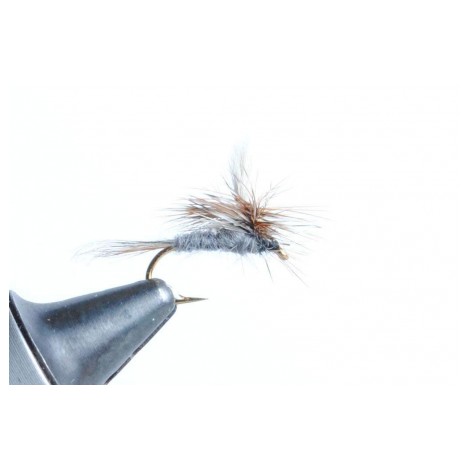
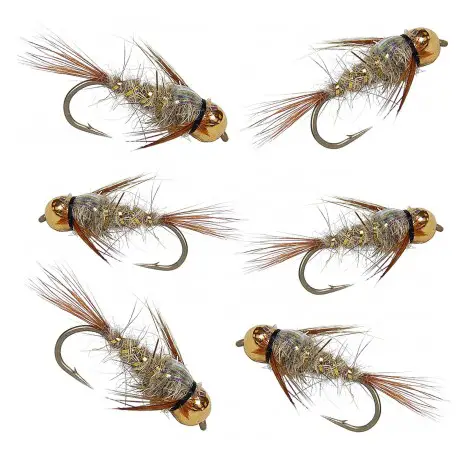
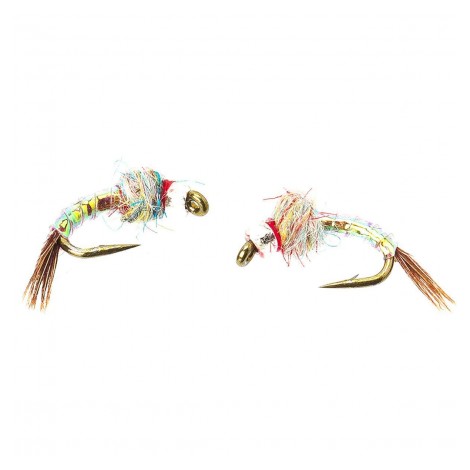
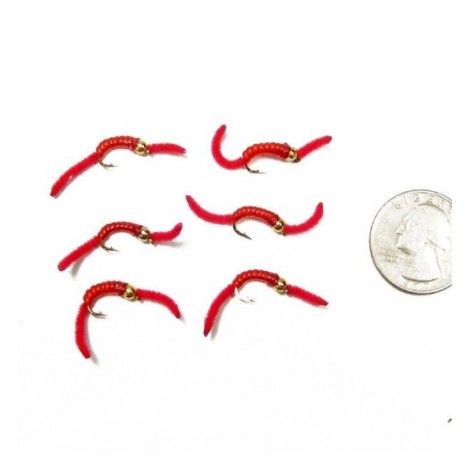
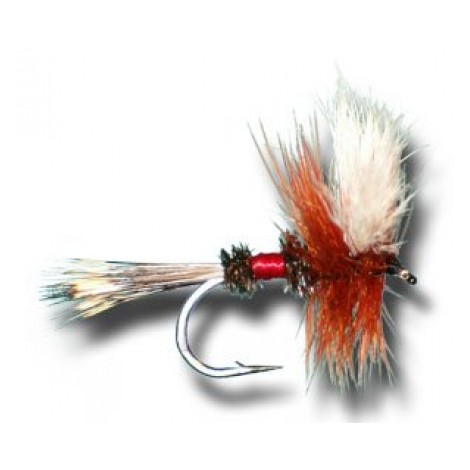
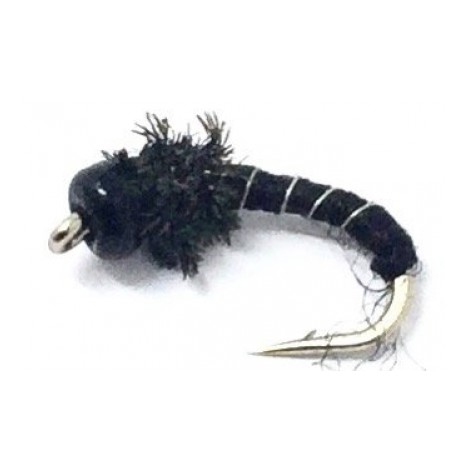
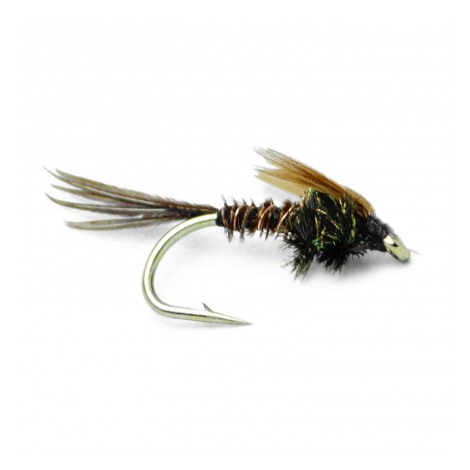

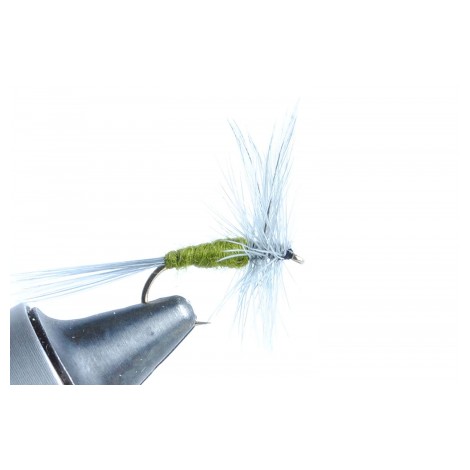
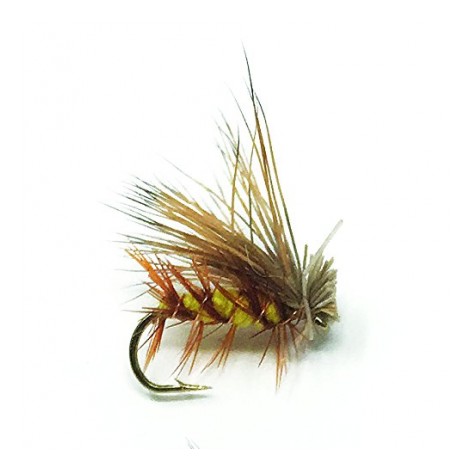
Criteria Used for Evaluation
Model
The question you should always ask before you attach your fly is: which one do I need? There are three different types of flies commonly used by fly fishers, each having their strengths, weaknesses, and proper time and place of use. They are as follows,
Dry Fly
This is the ideal fish for fly fishing for trout. Trout eat primarily underwater, but they also love eating insects by jumping out of the water and catching the food in its mouth in midair. So a dry fly makes for a fun experience since dry flies are called such by their ability to rest atop the water. So, a fish swimming below looks up, sees a delectable caddis fly, leaps out to eat it, and gets caught in your trap in the process. While trout can be caught with any of the three types, fly fishers prefer dry flies purely for the fun factor of it.
Nymph
Not only do trout primarily eat underwater but they have a particular taste for the early stages of insects including mayflies, caddis, or stoneflies. This stage is known as the nymph, and the fly fishing version of the same name is about the same size, and unlike the dry fly, is meant to rest near the bottom of the water, where the aforementioned insects spend the majority of their nymph stage of development. As such, when a trout comes swimming by for a snack, it’ll scoop up the fly and you’ll have caught it.
Streamer
When you fish with a streamer fly, make sure to have a heavier weight for the tippet. Because fish tend to hit streamer flies hard and fast. Streamers are meant to resemble insects that are fast and tend to get away easily. So the fish have trained themselves to attack the moment they have the bug in their sights and they can squeeze off an attack. The best way to fish with a streamer is by casting the line out into a lake, usually the part that looks like it has the most trout. You then strip your line in short or long pulls, causing the streamer to move and draw attention. Keep doing this until you get a bite.
Durability
If the catch fails at the moment of truth because your hook snapped off in the fish’s mouth. The hook used to make the fly should always be considered a top priority because it’s going to be what helps you bring the fish in after catching it. Most fish hooks are made of steel, so them breaking is unlikely, but it can happen under the right circumstances.
In a more general sense, the durability of the fly should always be a subject of interest. The reasons for this are fairly obvious. Clearly, we want the flies we cast out to actually work properly, not unravel as time goes on, etc. In a majority of cases, however, this is not a problem. Manufacturers have been at this for a long time and know-how to make these things to last.
Versatility
What does this mean? Well, look at the top spots on this article, one of the main pros of the entries up there is how they can be used in various different situations. The best ones can be used at any point in the year. And they can also be used against any kind of fish that’s looking for something to snack on. Versatility is king because that means you don’t have to spend as much on more flies.
Style
The presentation of a fishing fly refers to the ripple effect, sound, and general impact they have upon hitting the water after casting. The presentation of your fly is incredibly important because the idea of a fishing fly is to replicate the appearance of whatever insect or fish your fly is supposed to represent as much as possible. So you need to make sure your fly doesn’t hit the water too hard. Many things determine the presentation of the fly, most of which will be on this list, but the important thing to remember is that subtlety is key when fly fishing, so your presentation should always be considered.
But getting it out there is only half of the battle. The other half is making sure it can fool the fish you’re planning to catch. How you determine this is simple: does it or does it not look like something the fish normally eats. In the case of trout, this may be the caddis fly, or aquatic worm, or some other insect or creature that the fish in question loves to eat. The fly needs to resemble these foods as long as possible until the fish bites down on it, letting you reel it in. How well the fly in question resembles the fish determines whether or not they can be included among the all-time great fishing flies.
Weight
There are three weights you must consider when putting together the perfect fishing rod. There’s the weight of the rod, the weight of the fishing line, and finally, the weight of the fly. The weight of the fly determines a lot, which may come as a surprise. After all, how can such a tiny object determine so much of your cast?
Very easily, turns out, since you’ll be throwing that object out into the water, held up only by an incredibly thin string and the force of your throw. If the fly is too heavy, then it may alter its course in midair, or it may not go out as far as you need it to. However much your fly weighs should determine how far you plan on throwing it and how hard you’ll have to throw it in order for it to reach that distance.
10 Best Fly Fishing Flies
1. Parachute Adams Dry
When anyone thinks of fly fishing, and especially fishing flies, what pops into their head, even without their knowing, is the Parachute Adams. Every serious fly fisher has at least one in their tackle box, regardless of size, model, or condition, there’s always at least one. To the point where it’s considered to be the default setting of fly fishing.
Multi-seasonal
One of the deciding factors in what fly you can use when fly fishing should be whether it can handle the current climate. Some flies work better with colder climates than warm ones, and others vice versa. This must do with many things, not the least of which being the hibernation and migration patterns of different insects depending on the season. However, the Parachute Adams has proven effective regardless of season or climate. And this must do with one very deliberate design choice.
Deliberate resemblance
The Parachute Adams resembles several different types of insects, but not just any random types. The insects that the Parachute Adams resemble are ones that are active at every season of the year. Making it all the easier to fool potential catches.
Cost and Value
The price of the Parachute Adams can vary depending on the time you go looking for it. Being one of the most famous dry flies out there, it’s typically owned by everyone, but eventually, everyone needs to replace it. So the demand can spike or fall.
2. Hare’s Ear Nymph
Now here is a classic among flies, and for very good reason. The hare’s ear nymph and the entire hare’s ear lineup is one of the most universally acclaimed flies in the business, for many reasons. One of the most obvious is its appearance. Whether it’s the classic design or the flashier gold ribbed variant, the hare’s ear has cemented its place in the collective tackle box of fly fishers everywhere.
Versatile
Every fly comes in different sizes, but what makes the Hare’s Ear so remarkable is that in different sizes it can pass for different categories. It can be a caddis fly, a nymph, a mayfly, a scud, a stonefly, and whatever else you may need. The sheer versatility of the Hare’s Ear is staggering and is the biggest secret behind its popularity.
Perfect Imitator
The reason that this fly can be used in so many situations is that the Hare’s Ear is technically designed to not look like any specific bug. But it’s also designed in such a way that, with a bit of tweaking, can look like any fly you need it to. It looks like nothing, and thus it’s free to look like anything.
Cost and Value
If you go after the gold ribbed variant of the Hare’s Ear, it may ratchet up the price a bit, but not by too much, and besides that, it won’t cost you any more than your average fly.
3. The Rainbow Warrior
The Rainbow Warrior presents an odd subversion of the usual expectation when it comes to a fly fishing fly. Mostly because “rainbow” is very apt, the tungsten rainbow warrior is every color of the rainbow rolled into one. And obviously, no such creature exists in nature. One would think this would render the rainbow warrior useless, and yet fly fishermen everywhere love it. And that’s because this fly has two little secrets to its design.
Contrasting colors
The rainbow warrior isn’t just comprised of random colors, it’s comprised of colors that clash with each other. Most Rainbow Warriors are bright green with harsh red stripes and adorned with white and blue tufts at the tip. These contrasting colors, whether in colored or clear water, have been shown to promote strikes from fish.
Easy to spot
By which this means a good deal of bait can be lost in the murkiness of certain bodies of water. Dull greens can blend in with the gunk of a lake, and even certain bright colors can be glared by the sun. But the specific blend of colors a rainbow warrior implements make it instantly spotted by any fish around. Combine that with the clashing colors and it’s essentially irresistible to a hungry trout.
Cost and Value
The best thing about fly fishing flies, in general, is that, if you aren’t buying a set, you’ll be spending a very little amount of money. You can buy a Rainbow Warrior fly for pretty cheap on average.
4. San Juan Worm
The San Juan Worm can be considered a rather underrated fly, which is a shame because as the placement should tell you, it’s one of the best. Most anglers get all wrapped up in the fine details, that they forget the pure simplistic effectiveness of the San Juan. This is one fly that has more than earned its place in your tackle box.
Universal Appeal
One of the most common underwater creatures is the aquatic worm. Almost every body of water on the planet has some amount of aquatic worm living in it. This means the San Juan Worm can be used in any body of water because the food it imitates is something that every fish has consumed at some point.
Simplicity is key
The thing about worms is that they aren’t complex creatures. Their bodies perform very basic functions and thus have very simplistic appearances. As such, if one wants to imitate a worm for bait, then it needs to embody that simplicity.
Cost and Value
A single San Juan Worm won’t cost you more than a dollar at any retail fishing shop. However, some stores sell them in bundles because of this, and that can add to the price.
5. Royal Wulff
Contrary to common belief, the Royal Wulff did not originate from artist Lee Wulff directly, but from a variant on the Royal Coachman is known as the Quack Coachman. Wulff then adapted the design, and the Royal Wulff was born. With Wulff’s name behind it and the genuine use it provided, the Royal Wulff became a rousing success to this day.
Easy to Spot
One of the main frustrations for new fly fishermen is keeping track of their flies once they’re out on the water. It’s easy to lose them in all that water, especially if there’s fog or some other anomaly. The white wings that come with the Royal Wulff make it easy to spot out on the water. For both you and the fish.
Tough under pressure
One of the worst things in the world for a fly fisherman is losing your fly because it broke under the sheer force of the fish latching onto it. Whether it’s because the line snapped or the fly just wasn’t that durable, the fact is that you’ve lost a fly. The Royal Wulff, however, is designed in such a way and with such materials as to make such a thing happening impossible.
Cost and Value
The Royal Wulff is actually pretty cheap for its quality if you aren’t buying in bundles. This means you can have one of the best flies on the market for relatively cheap.
6. Zebra Midge
Fly fishing is considered smaller scale than normal “spin” fishing as it is, but sometimes you need to go even smaller still. That’s where the Zebra Midge comes into play. This famous little fly is considered one of the best for catching the notoriously picky tailwater trout, but what is it that makes it so good? There are two little secrets to this little fly.
Smaller size
Even the larger sizes of the Zebra Midge are small compared to other flies but don’t take that to mean it’s less effective. In fact, the small size makes it perfect for fish that prefer smaller meals. Like humans, fish get full, and won’t always be in the mood for a full course meal. So a smaller bite will entice them more during those periods.
Detailed design
When it comes to making believable bait, any hunter or fisherman will tell you the same: the devil is in the details. So the best flies will put as much little detail into their design as possible to appear as the fish/insect/plant they need to. The Zebra Midge is outfitted with CDC tufts that simulate the appearance of gills and wings. Making the illusion all the more believable.
Cost and Value
Among fishing flies at least, the Zebra Midge can be pricey. However, the value of this fly more than makes up for the initial cost of buying.
7. Pheasant Tail Nymph
The Pheasant Tail Nymph shares a few characteristics with the Gold-Ribbed Hare’s Ear. Like the Hare’s Ear, it uses a bright color palette to keep better track of it while out on the water, and it shares some structural design choices for added effect. However, there are certain aspects to it that set it apart from the Hare’s Ear. The following are the two most important.
Dietary Imitation
The main appeal of any Nymph style fly is that they imitate a food source that isn’t imitated as well in other areas: the subsurface food source. Seeing as how these are one of the most common food sources in a fish’s diet, any tackle box should have at least one nymph, and it should definitely be the Pheasant Tail.
Durable
The Pheasant Tail Nymph is a tough little sucker that will go for a while before finally breaking. And even that’s assuming that you get a bite every time you throw it out. Even just getting 2 out of three will add years of life to this little fly.
Cost and Value
Due to their high quality, these flies are a bit more expensive than your average fly, usually cracking at least over $5. Not a lot by normal standards, but for a fishing fly, it can be a lot.
8. Bead Head Wooly Bugger
Another consumer favorite, the Wooly Bugger is another fly that immediately jumps into people’s minds when they hear the term fly fishing. Partly due to just how silly the name is, admittedly, but the Wooly Bugger genuinely is a great fly, deserving to be in any self-respecting fly fisherman’s tackle box.
Underwater Versatility
If the Parachute Adams is the go-to fly for above-the-surface fishing, the Wooly Bugger is the go-to fly for under-the-surface. In different sizes, it can imitate everything from Minnows to Crayfish, to Leeches.
Longevity
With other, more generic hooks, you have to worry about the hooks snapping off from the force of a fish bite, or the streamer unraveling from overuse. But because of how well the Wooly Bugger is crafted, that will never happen with this fly.
Cost and Value
In bundles, the Wooly Bugger may cost you a pretty penny, and in singular doses, it’s still rather expensive as singular streamer flies go. Still, any fly fisher will tell you that it’s more than worth the cost.
9. Blue Winged Olive
Anyone who knows about the cycle of blue winged olive insects will probably be a bit skeptical about it being so high. After all, if the fish know when their prey are likely to show up (typically the end of September or partly into October) wouldn’t they be less likely to be fooled? Well, while that is when Blue winged olives are more likely to hatch in droves, they still hatch in bursts all year. Ensuring that this excellent fly model always has a place on the water.
Design
It may seem odd to give trout so much intellectual credit as to think they know when a different species are going to hatch down to the day. However, they are at least intelligent enough for basic pattern recognition, and that is enough to not be fooled by lesser models of the fly. However, with its trimmed back hackle, giving it a low-floating effect, the blue-winged olive is better at fooling its targets.
Size
The size of the fly is important, as it needs to match the size of the creature it’s trying to imitate, or if it isn’t trying to imitate, it needs to be small enough to make the fish think it can eat it. Little olive duns have a very specific size to them, and thus the fly is sized to that exact specification.
Cost and Value
The blue-winged olive is considered cheap by fly standards, so unless you buy in high quantities, it should be taken as a surprise if the price cracks into the double digits.
10. Caddis Elk Hair
Considered the second banana to the Parachute Adams, the Caddis Elk Hair is a more specialized version of the Parachute Adams. Whereas the Parachute Adams has proven effective against any type of fish it’s gone up against, the only fish the Caddis has consistently caught are trout. But with that said, the trout fall for it every single time. Why is this? There are a few reasons actually.
Realistic Appearance
The Caddis Elk Hair has almost always caught any trout that has laid eyes on it, because the Caddis Elk hair doesn’t just imitate the type of insects that trout eat, in this case, the Caddis fly, but it practically looks identical to a fish swimming underwater. Every fine detail is crafted to make it as realistic looking as possible.
Realistic motion
Not only does the Elk Hair Caddis look like a real caddis fly, but once on the water, it acts like one too. Once it hits the water, the fly will bob up and down, near-perfectly simulating the movement of a caddis fly trying to get off of the water. No trout can resist.
Cost and Value
When the trout are in abundance, the price can go up from demand. So be sure to get this as early as you can, as it should be a staple of every fly fisher’s tackle box.














